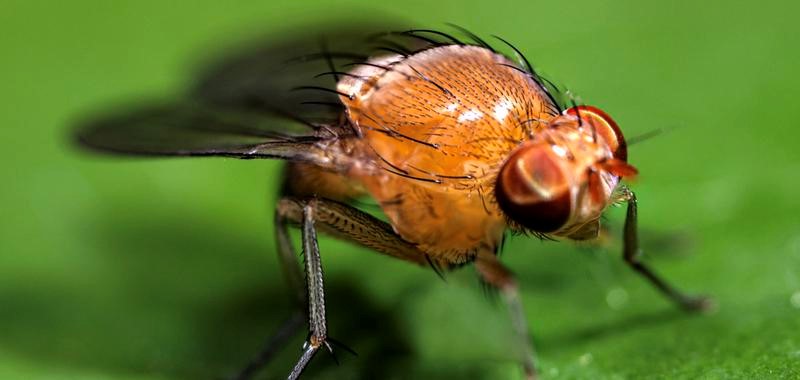Description

Disclaimer: Copyright infringement not intended.
Context
- Researchers from Cambridge University and the California Institute of Technology achieved a significant breakthrough by engineering a sexually reproducing fruit-fly species to reproduce asexually.
- The first study reporting this feat was published in July 2023, with a follow-up study appearing in the February 2024 issue of Heredity.
Details
- Fruit flies (Drosophila melanogaster) have long been favored by genetics researchers for their suitability as model organisms, leading to numerous breakthroughs in biology and evolution.
- Decades of intensive research with fruit flies have provided insights into genetics, development, behavior, and various biological processes.
Understanding Parthenogenesis
- Parthenogenesis refers to the process of reproduction without fertilization by males, resulting in offspring derived from unfertilized eggs.
- Some species, such as Drosophila mangebeirai and Drosophila mercatorum, exhibit facultative parthenogenesis, where isolated virgin females can produce offspring without mating, albeit at a small fraction of the time.
Engineering Asexual Reproduction
- Genetic Manipulation: Researchers employed genetic engineering techniques to induce asexual reproduction in a sexually reproducing fruit-fly species.
- Biological Consequences: The successful manipulation led to profound biological consequences, highlighting the versatility and plasticity of genetic systems.
Parthenogenesis-Related Genes
- Researchers aimed to identify genes responsible for enabling unfertilized eggs of Drosophila mercatorum to undergo parthenogenetic development.
- Using RNA sequencing, they identified 44 genes in D. mercatorum eggs that exhibited differential expression during parthenogenetic development compared to sexually reproducing conditions.
- Researchers manipulated gene expression levels in D. melanogaster, overexpressing polo and Myc genes while reducing Desat2 gene expression.
- This manipulation induced parthenogenesis in approximately 1.4% of eggs, with resulting adult flies capable of reproducing via mating.

Role of Polar Bodies
- Chromosome Transmission: During fertilization, an egg receives one set of chromosomes from each parent, resulting in the formation of polar bodies.
- Normal Development: Normally, polar bodies are lost as male and female pronuclei fuse, initiating embryonic development.
- Altered Protein Levels: Manipulation of polo, Myc, and Desat2 protein levels likely disrupted polar body disposal, enabling their participation in embryonic development.
Genomic Structure and Gene Expression
- DNA Structure: DNA is composed of two strands, with phosphate-sugar backbones and base pairs (adenine-thymine, cytosine-guanine) forming a double helix.
- melanogaster Genome: The genome consists of four DNA molecules with approximately 200 million base pairs, encoding about 13,600 genes.
- RNA Structure: RNA is single-stranded and contains ribose sugar, with base pairs (adenine-uracil, cytosine-guanine) forming complementary sequences to DNA during transcription.
Gene Function and Protein Synthesis
- Genes: Segments of DNA comprising thousands of base pairs, containing instructions for synthesizing specific proteins.
- Transcription: The process by which DNA sequences are transcribed into RNA molecules, using complementary base pairing (A-U, C-G).
- Translation: RNA molecules are translated by ribosomes into sequences of amino acids, forming proteins based on the genetic code.
Implications
- Biological Insights: Understanding the mechanisms underlying parthenogenesis in fruit flies provides insights into reproductive biology and evolutionary adaptations.
- Technological Advances: This breakthrough opens new avenues for genetic and developmental research, offering novel tools for studying reproductive strategies and genetic control mechanisms.
- Ethical Considerations: As with any manipulation of genetic systems, ethical considerations regarding the implications of asexually reproducing organisms warrant careful consideration.
- Pest Control Strategies: The study highlights unintended consequences of pest control methods relying on irradiated or genetically modified males, potentially selecting for facultatively parthenogenetic individuals
Asexual and Sexual Reproduction
Asexual Reproduction
- Asexual reproduction involves the production of offspring from a single parent, without the fusion of gametes.
- Common mechanisms of asexual reproduction include binary fission, budding, fragmentation, and parthenogenesis.
- Advantages:
- Efficiency: Asexual reproduction allows rapid population growth under favorable conditions, as there is no need to find or attract mates.
- Conservation of Energy: Organisms invest less energy in reproduction since there is no need to produce specialized gametes or engage in mating behaviors.
- Examples: Asexual reproduction is observed in various organisms, including bacteria, protists, fungi, and certain plants and animals (e.g., Hydra, starfish).
Sexual Reproduction
- Sexual reproduction involves the fusion of specialized haploid gametes (sperm and egg) from two parents to produce genetically diverse offspring.
- Sexual reproduction typically involves meiosis to produce haploid gametes, followed by fertilization to restore diploidy.
- Advantages:
- Genetic Diversity: Sexual reproduction promotes genetic variation through recombination and genetic exchange, enhancing adaptability to changing environments.
- Evolutionary Flexibility: Genetic diversity allows populations to evolve in response to selection pressures, contributing to species resilience and survival.
- Examples: Sexual reproduction is widespread among animals, plants, fungi, and protists, including humans and flowering plants.

Comparative Analysis
- Genetic Diversity: Sexual reproduction generates offspring with unique combinations of genetic material, promoting genetic diversity and increasing the likelihood of adaptation to diverse environments. In contrast, asexual reproduction produces genetically identical offspring, limiting genetic diversity and potentially reducing adaptive potential.
- Costs and Benefits: Asexual reproduction is often more efficient in terms of energy expenditure and population growth rate but lacks the genetic variation necessary for long-term evolutionary success. Sexual reproduction requires more energy and resources but offers advantages in terms of genetic diversity and evolutionary flexibility.
- Evolutionary Implications: The prevalence of sexual reproduction in complex organisms suggests that genetic diversity and adaptability conferred by sexual reproduction outweigh the immediate benefits of asexual reproduction in the long term.
|
PRACTICE QUESTION
Q. While asexual reproduction offers short-term advantages, sexual reproduction provides long-term benefits. Discuss in the context of evolutionary implications. (150 words)
|















